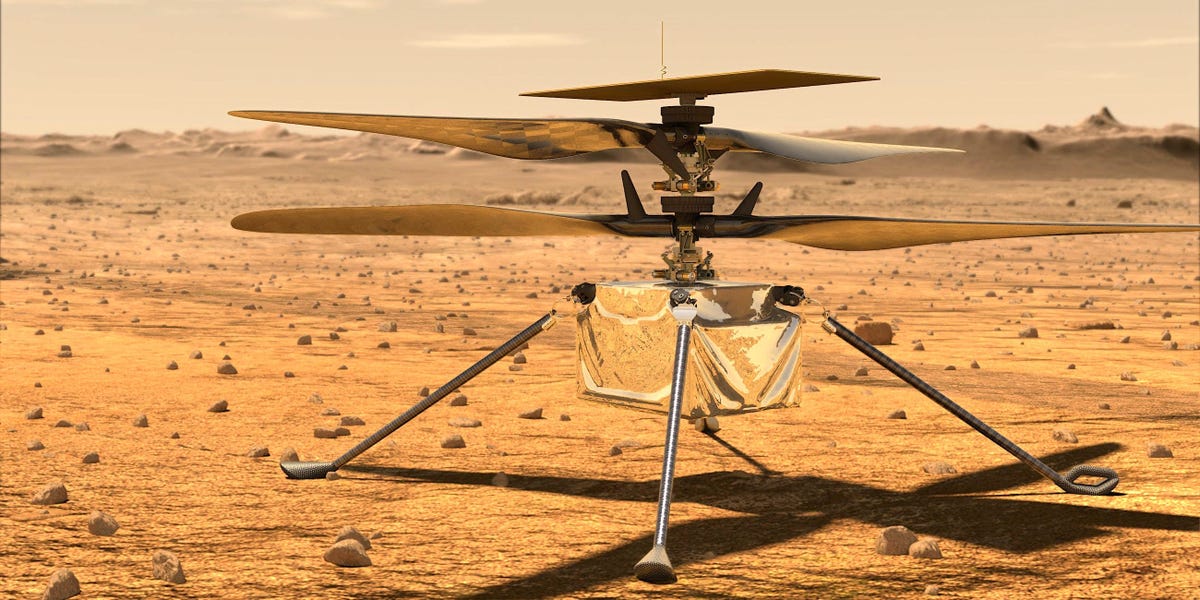Kinda sad. I mean it lasted 3 years when 5 flights was the goal which is fantastic. But people in general, and through permorifies these little bots and give them personalities, and are sad to see them go. Also, is it just me or does NASA have really low expectations of their equipment? Is it always seemed to last like hundreds of times longer than they expected?
It isn’t low expectations. It is the implications of high demands. When they spec a project to last 5 flights, they are serious about that guarantee. There are so many redundancies built in the make sure that no matter the curve ball the planet throws at them, they will get their 5 flights out of it. That is on the worst case scenario side though. Then you factor in best case, and now you have things lasting years longer than their planed mission. This is how most of their projects end up lasting so much longer than planned, while also having almost every project last the minimum. Those projects minimums are all but a promise that they will do it, barring catastrophic events.
It is also more cost and time efficient. If there was a project that was going take 10 years and cost $10M with a 50% success rate and you were told ‘for each extra year and $1M-$2M we can increase that success by another 10%’ then you better believe, as a tax payer, I would be passed if they didn’t spend the extra time and money to get it up to at least a 90% success chance.
Now just scale that to hundreds of millions and billions of dollars. Some of these projects are measured in decades and take people’s entire careers. If you had a project that was 20 years of design, build, test, launch, and travel- wouldn’t you want to do some work on its ensure success?
and through permorifies
anthropomorphize
Oh my God I had to read your comment three times before it made sense in my head. Thank you for the explanation.
Bone apple teeth
Damn dictation
There’s some truth to underestimating the equipment for PR, it certainly has a huge positive PR spin to last 3 years off 5 flights estimate. But at the same time they are spending a lot of their budgets on projects that need to collect data. If 5 flights gives them the guarantee of solid data, then it was a justified project. On the other side of this, it was the first powered flight in any atmosphere outside of earth. There’s no way we had enough data to know just how long or how many flights it would do. Being this far off is reasonable. Same for the previous rovers, their estimates were low and far exceeded. The rover this time around got a much longer estimate, even if it’s beaten it already.
Fair enough. In that case the next copter they send to mars should have something like a 150 flight estimate if this one did over 400.
I would reasonably expect an increase in expected life / flights of a future model for sure but it will be highly dependent on what’s being tested. NASA aren’t making tools, they’re making instruments, if that makes sense. They aren’t producing a rugged tool for accomplishing a mission that someone buys to use, they’re making scientific equipment that carry out experiments and collect specific data. Even the instruments themselves are experiments, such as the durability of joint designs on the collection arms, or the roter materials selected all have a purpose and associated datapoint.
All that to say, the expected lifespan / flights on the next model will reflect the mission goals and budget / cost of the project and not necessarily an accurate expectation of the system. More or less “we designed this instrument to deliver x amount of data” not “we designed this tool to survive y number of uses”.
Man. When we get one of these to Titan, it’s going to be wild. Flying through the methane air there and snapping shots of liquid hydrocarbon lakes.
The risks of a spark firing it all up… I’d like to see that!
Edit: a commenter asked if o2 was needed. Good question. Does anybody know?
Yes, you need O2 for combustion:
CH4 (Methane) + O2 -> H2O + CO2 + heat
Thanks!
wouldn’t you need O2 for there to be a risk of fire and explosion?
Maybe the helicopter blades would sound like a low ‘woob, woob, woob’ in methane.
RIP space chopper
In the science world, not “knowing”, doesn’t mean they don’t have good guesses that are incredibly likely to be correct. I mean, given the known variables; that it lost communication mid-flight, and then when they got communication back and got eyes on it, it had a broken rotor blade. There is really only 2 likely options, it had some sort of lock-up in the software that caused the communications loss and it crashed due to that lock-up. Or it had some sort of physical malfunction that broke the rotor blade and the resulting jolt knocked out communications.
One of those two scenarios is incredibly likely to be what happened, but they want enough data to know for sure exactly what and when and in what order. And they are lamenting that they may never get that level of clarity.
Occams razor dictates that the simplest answer is usually the correct one. And the simplest answer is this situation is clearly something else entirely:
Mars-Hawks
I wonder if the Perseverance can make its way over to the helicopter and jump start its electronic systems so they can get the crash logs.
The helicopter isn’t dead, it broke a rotor. They can still communicate with it since they were able reestablish comms.
Did it crash? I won’t be surprised if NASA can make it walk or hop even with a broken rotor.
Howard tried to impress a woman again? first with the rover and now this…
So sad.








